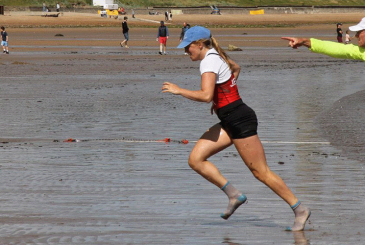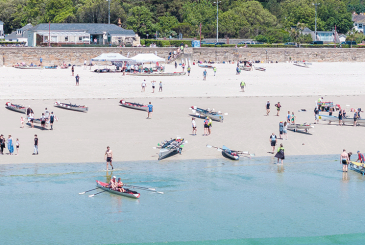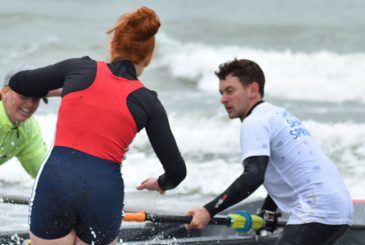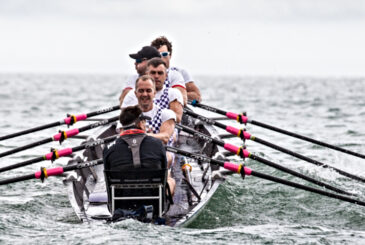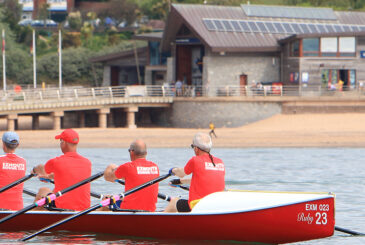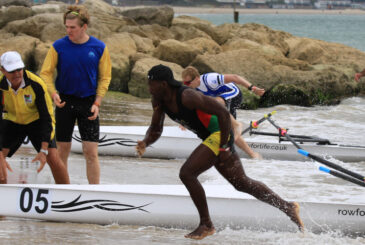The way you navigate along the twists of a wind-blown, 4km or 6km coastal endurance course is just as important as how hard you row. Experienced coastal sculler Jerry Owen unpacks how to approach a coastal endurance race with the confidence and control of a seasoned competitor, even if you’re new to the sea.
Pick your line: The start matters more than you think
In flat-water rowing, the start is uniform, with stake boats, aligned bows, a clean go. Coastal is more of an organised chaos. And how you start – whether from water or on the beach – shapes your entire race.
Water starts
For a water start, the entire fleet, sometimes as many as 18 boats, jostles for the best position on the start line. This is marked out by two buoys on the water. There’s a fine margin between maximising warm up time and getting to the start line early enough to find a good position. Here are some things to watch out for:
- Scout the course: Before race day, study the course map and check the distance to the first buoy. In the morning, check the impact of wind or tide. Your position on the start line should set you up for the cleanest water and the sharpest line into turn one, not just the shortest. Also, having the inside line into the turn can be beneficial.
- Choose clean water over crowds: The centre might seem tempting, but it’s often the messiest. If you’re confident in your boat speed and steering, go slightly wide for clearer water. It could save you a clash and help you build rhythm early.
- Be aggressive, not reckless: Hold your ground but don’t force a fight at the line. Getting tangled or boxed in at the first turn can end your race before it gets going. A strong, clean start beats a frantic sprint every time.
Beach starts
In beach starts, boats are held by boat handlers along the shore in allocated lanes. The athletes must stand outside the boat with both feet on the sand. On the ‘go’, athletes can enter the boat and then begin the row to the first buoy. Here are some top tips:
- Practice your transitions: If you’re used to stepping into a boat from a pontoon, a beach launch can feel chaotic. Rehearse your entry and seat setup. It’s going to feel fast and messy. But the smoother your transition, the sooner you’re moving.
- Co-ordinate with your boat handlers: Make sure they know your plan, where to hold, and when to let go. A clear ‘go’ call can mean the difference between a smooth launch and a shaky scramble.
- Don’t panic in the surf: If there’s swell, time your launch with the waves. Rushing into a breaking set can capsize even the best-prepared crews.
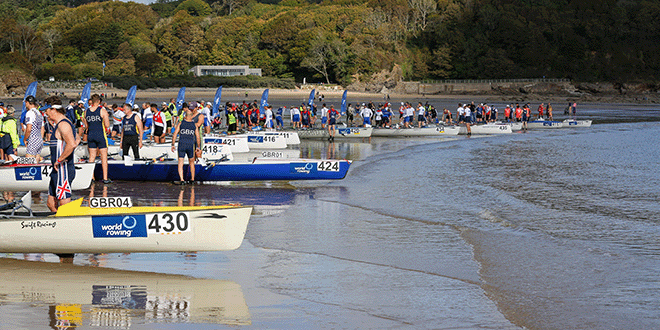
Eyes up, course ahead: Steering is strategy
Unlike the straight or at least smooth courses of flat-water racing, coastal endurance courses are marked by multiple turning buoys, and the path you’ll take between them will rarely be straight. Good coxing or bow steering becomes essential – you need to think several hundred metres ahead at all times.
- Have a plan for every leg: Know where the buoys are, how the wind will hit you on each stretch, and what kind of water you’ll likely encounter. Will you be surfing downwind swells or punching into chop? This affects everything from your stroke rate to your steering.
- Use landmarks and horizon lines: Coastal scullers often use land features or align distant buoys to keep a straight course. The fastest line is rarely the one that feels straight – trust your visuals over instinct.
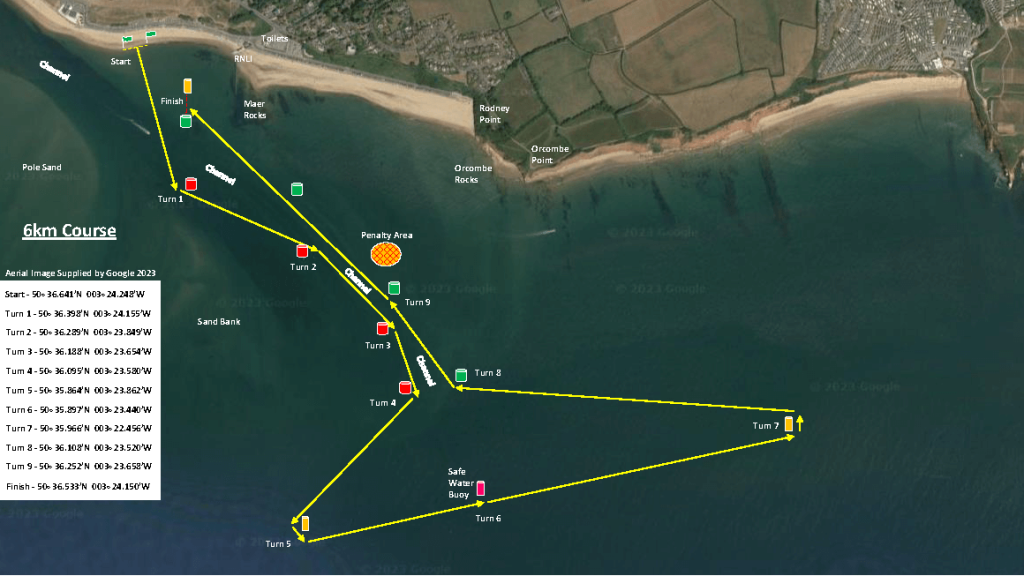
Turns win (or lose) races
Approaching a buoy turn is where coastal endurance racing most differs from flat-water. It’s tactical, physical, and often messy.
- Plan your approach early: Aim to round the buoy wide enough to avoid congestion, but close enough not to gift metres to competitors. If you’re on the inside, commit to it. If you’re outside, don’t waste energy fighting for an angle that’s already lost.
- Clashes can happen – stay smart: Blade clashes and boat contact are part of the game, but you can avoid the worst by holding a consistent line and staying predictable. Most protests stem from erratic steering or late moves, not strong, clean turns.
Final thoughts
Endurance coastal sculling rewards everything that flat-water rowers excel at – fitness, focus, consistency – but it also demands an extra layer of adaptability. You can’t just row hard. You need to think like a tactician, move like a sailor, and react like a fighter pilot.
Learn the course. Pick your line. Own the turns. And when in doubt, row smart – the sea is very powerful and rewards those who respect it.

Banner photo: Ben Rodford Photography.



